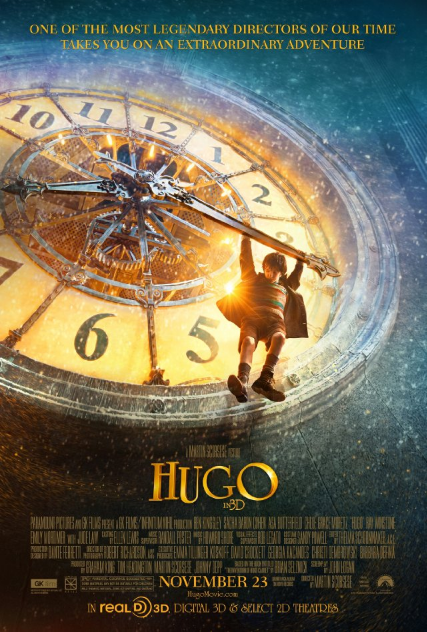By Michael Scoular (The Cascade) – Email
Print Edition: November 30, 2011
 At the center of Martin Scorsese’s Hugo is an automaton, a doll-like figure we are told was used by magicians to wow audiences through the acts it could perform, which at first seem implausible to be done by a simple work of machinery: dance, write, walk, draw. Hugo and his father are restoring one, left by an owner, neglected by a museum. “The secret is in the clockwork,” the father says, revealing the inner mechanisms, imparting a secret knowledge to his son. The gears and other workings just fit together, almost impossibly, to—Hugo hopes—create a movement that you might call extraordinary.
At the center of Martin Scorsese’s Hugo is an automaton, a doll-like figure we are told was used by magicians to wow audiences through the acts it could perform, which at first seem implausible to be done by a simple work of machinery: dance, write, walk, draw. Hugo and his father are restoring one, left by an owner, neglected by a museum. “The secret is in the clockwork,” the father says, revealing the inner mechanisms, imparting a secret knowledge to his son. The gears and other workings just fit together, almost impossibly, to—Hugo hopes—create a movement that you might call extraordinary.
Hugo depicts a child’s perspective of the world. Scorsese has an often ignored experience in this area, and is able to both speak to children and capture the feeling of childhood wonder in Hugo. Machinery maintenance is laborious, monotonous work, but to a child the endless stairways and tunnels leading to it are a utopia of freedom of movement. Glimpses of unheard conversations are the silent cinema of youth, where visual perception alone creates sensation. And grown-ups can be fearsome, incomprehensible, strange, and limitlessly learned. Hugo himself is reluctant to speak of why exactly a notebook is important, or speak much at all about himself. This goes against the grain of today, but his introversion, born out of the loss of a family member, cultivated through a devotion to material more easily controlled, is one of the truest depictions of childhood in modern American cinema.
Martin Scorsese has never lost touch with or love for the movies of his youth. His bottomless support for their restoration and preservation is not so publicly prominent unless TCM is your television station of choice, but it is on full display in Hugo. Perhaps the most moving, indelible image is of a man staring in wonder at a movie camera. Scorsese does not merely show such an image and expect an audience reciprocation because everybody in the theatre must love movies, but instead he shows everything that built up to such a response for the filmmaker, everything such a response means to the man and illustrates why he loves movies. And maybe, just maybe, why we do.
Part of that illustration is in Scorsese’s use of 3D. The added dimension has proven to be a less than necessary, less than appealing element when affixed to some unsavoury attractions in the past two years, but Scorsese filmed Hugo from the beginning with 3D in mind and in doing so has made the addition not an annoyance, but a part of the pleasure of watching. Clocktowers have an added height, crowds density, rooms atmosphere, and people proximity. This is not to say they wouldn’t without the glasses, but with it scenes play differently. Take one from near the end of the film. A man stands on a stage. There is nothing to the composition but the top half of the man’s body, the spotlight on him, and a wholly black background. But with the addition of 3D and the size of the screen, he has an added presence. When he addresses the audience it is as if he speaks directly to us, not only because that is exactly what he is doing, but because the 3D makes him seem somehow alive. It gives images life in a way that is understandable by even a child.
“No one so young should know so much sadness,” a woman says to Hugo as a warning. Though she does not know it, she underestimates the boy completely. Hugo wonders about what he’s meant for. Scorsese’s film has a stellar list of cast members and collaborators, but shows, more than anything, what he is meant for. At this time where movies could be said to be at a definite crossroads, he shows us why movies and their makers are important. There’s a brilliant reading of a book passage by Chloe Moretz in the movie that sums up everything about the cinematic experience. You’ll know it if you’ve seen Hugo. No one so young at heart should not know of the sadness and warmth contained in its all too fleeting two hours.


